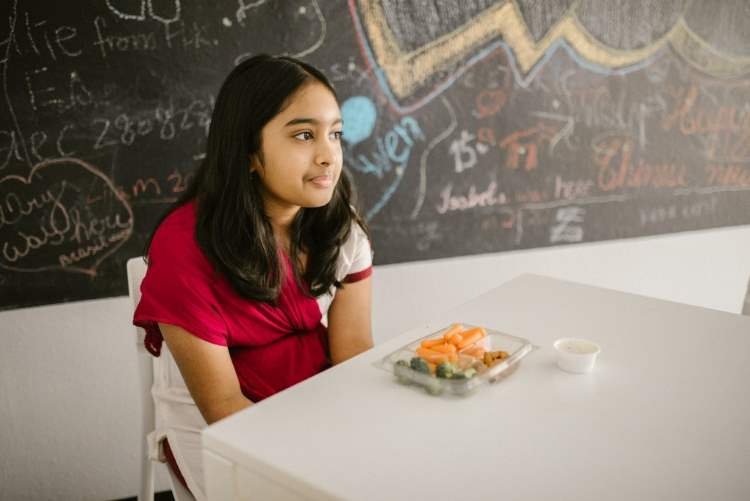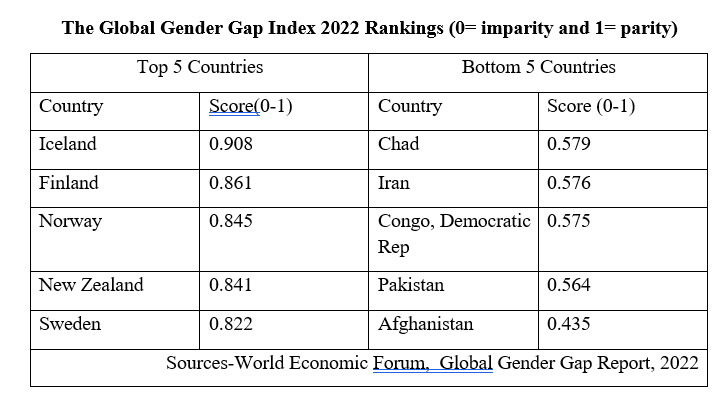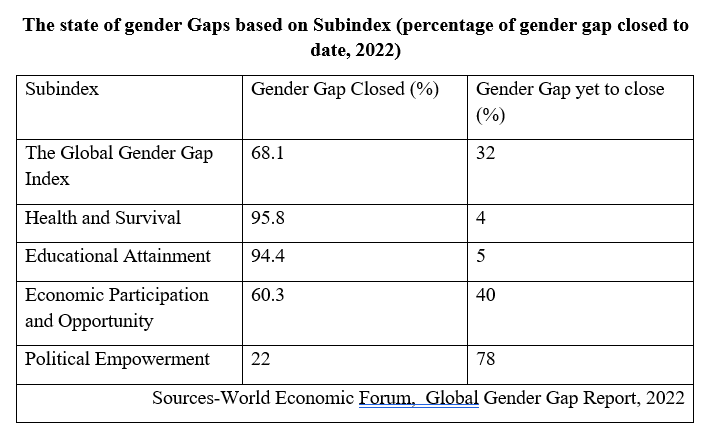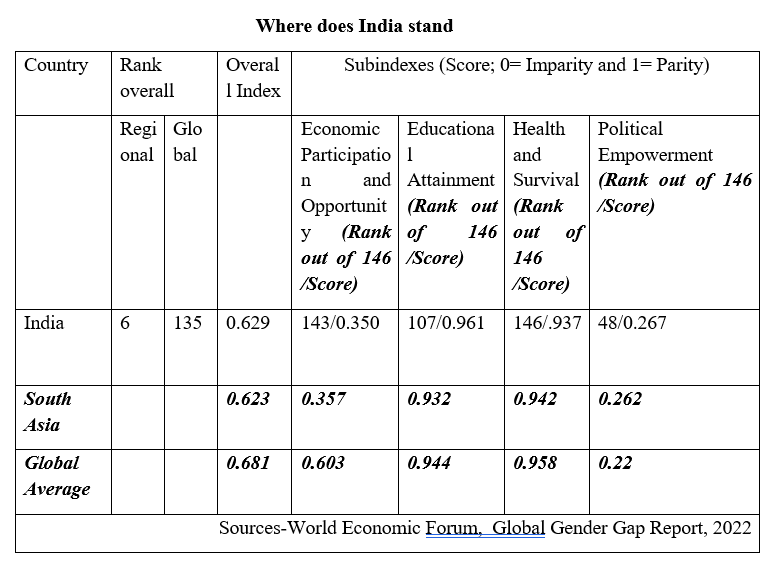
On March 8, the world celebrates International Women’s Day to recognise women’s contributions to shaping a more equal and sustainable world. It is a global celebration of the social, economic, cultural, and political achievements of women, as well as a call to action to advance women’s equality. The debate on gender parity is as old as human civilization. It has further deepened into the intellectual discourse with the advent of knowledge and technology driven economy.
Established thinkers and scholars ranging from Adam Smith, Thomas Piketty and Richard Wilkinson have intellectually argued on the advantages and disadvantages of having inequality in the society.
The term inequality is viewed through the prism of many constructs like income inequality, social inequality, inequality based on gender, and many more. When discrimination is based on gender, it becomes disastrous for the overall progress of any society. According to a 2018 report by McKinsey Global Institute, advancing women’s equality can add $12 trillion to the global economy and $700 billion to India’s GDP by 2025.
To monitor and measure the gap between men and women, World Economic Forum publishes a Gender Gap Report every year. The report gives lots of insights about the gender gap on the four key dimensions of human life — economic participation and opportunity; education attainment; health and survival, and political empowerment. The previous year’s report covers 146 countries across eight regions of the world.
READ I Explained: Rising number of human-elephant conflicts in Kerala
Losing war for gender parity
The WEF’s 2022 report has made some shocking observations. No country in the world has ever achieved full gender parity. To date, the global gender gap is 68.1%. On an average, 32% gap is to be closed globally which is expected to take another century if we progress at the current rate.
All the top 10 economies have closed the gap of at least 80% and the best performer- Iceland has closed 90.8% of the gap so far. Iceland remains the only economy to have closed more than 90% of its gender gap. Still, top-performing nations have a gap of at least 20% to close.
With only 22% closed to date, the gender gap in Political Empowerment remains the largest among four indicators selected for study. Across the 146 countries covered in the index, women account for only 26.1% of the 35,500 parliament seats and 22.6% of the world’s 3,400 ministers. As of January 15, 2021, there has never been a female head of state in 81 countries.


Across the 146 countries covered by the 2022 index, the health and survival gender gap has closed by 95.8%, educational attainment by 94.4%, economic participation and opportunity by 60.3% and political empowerment by 22%.
There is a significant diverse gap between the four different dimensions of the global gender gap. In health and survival and educational attainment, only 4% and 5% gap respectively needs to closed. In contrast to that, the difference between men and women on political empowerment and economic participation and opportunity have remained significantly larger. To date 2022, only around 22% and 60% gap have been closed so far on political empowerment and economic participation respectively.
Political empowerment is the most disturbing dimensions as far as gender parity is concerned. No country has fully closed this gap yet. Iceland (87% gap closed) is the only county in the world where the presence of women across parliament, ministries, and heads of states is the most widespread as compared to all other countries in the world.
Iceland’s score is 29% points more than the second ranked Finland, and is almost four times greater than the global average. In addition to Iceland, only 11 countries have closed more than 50% of their gap on Political Empowerment. Vanuatu and Papua are the two countries in the world, without a single woman member of parliament.
When it comes to head of the states, the data is very pathetic. The 2021 report reveals that, over the past 50 years, there has never been a woman head of the state in 81 (more than one-half) of the 156 countries covered in this report. Interestingly, even in some emerging and advanced economies like Italy, Japan, Mexico, The Netherlands, Russian Federation, South Africa, Spain, Sweden, and the United States, this is the state of affairs.
In an addition, there are 17 countries where women have been in power collectively for less than one year in the last 50 years, including France (0.89 years) and Canada (0.36 years). These are countries where gender parity is relatively progressive.
There is also a substantial gap between men and women when it comes to economic participation and opportunity. The report reveals that globally only 60% of the gap has been closed so far. Even among the best and the worst (at the bottom in the ranking) performing countries, there is sharp dispersion (40%) in economic participation and opportunity. When it comes to the gap between men and women in the workplace, the top 10 countries have closed at least 80% of the gap while the bottom 10 countries have only closed 40% of the gap.
Based on the evolution of the global average scores for each subindex over the past 16 editions for the constant sample of 102 countries, at the current rates of progress, it will take 155 years to close the political empowerment gender gap, 151 years for the economic participation and opportunity gender gap, and 22 years for the educational attainment gender gap. The time to close the health and survival gender gap remains undefined as its progress to parity has stalled.

India’s status is, in fact, worse than some of its South Asian neighbours like Bangladesh, Nepal, Sri Lanka, Maldives and Bhutan. With the overall score of 0.629, which is less than the global average (0.681) and slightly higher than South Asia; it stands at 135th position globally and regionally (South Asia) at 6th positions in the Global Gender Gap Index.
The data reveals that there is a huge disparity between men and women. Except for political empowerment and educational attainment dimensions, India’s score in the rest of the other dimensions is even less the average score of South Asia and the world.
Seeing such level of a skewed distribution of the gender gap in India should propel the policymakers to reverse this situation. The task is not easy. If India progresses at the current pace, it may take another 50 years to eliminate the gap between men and women.
The Union government is making interventions through various schemes. In the latest budget of FY24, the finance minister announced for a one-time new small savings scheme – Mahila Samman Savings Certificate. It will be made available for a two-year period up to March 2025. This will offer deposit facility up to Rs 2 lakh in the name of women or girls for a tenor of 2 years at fixed interest rate of 7.5% with partial withdrawal option.
Even the budget allocation made to the ministry of women and child development increased by Rs 267 crore from Rs 25,172.28 crore allotted in 2022-23 to Rs 25,448.75 crore in 2023-204.
Deendayal Antyodaya Yojana National Rural Livelihood Mission has achieved remarkable success by mobilizing rural women into 81 lakh self-help groups. The budget further enabled these groups to reach the next stage of economic empowerment through formation of large producer enterprises. They will be helped with supply of raw materials and for better design, quality, branding and marketing of their products. Through supportive policies, they will be enabled to scale up their operations to serve the large consumer markets, as has been the case with several start-ups growing into unicorns.
On this Women’s Day, let us pledge to discourage gender-based discrimination and help in empowering the women for a more prosperous nation. Let us recognise the importance of Nari Shakti (women power) as the harbinger of our bright future and for women-led development during the Amrit Kaal, the 25-year-long lead-up to India@100.
(Dr Shashank Vikram Pratap Singh is Assistant Professor at Shri Ram College of Commerce, University of Delhi.)
